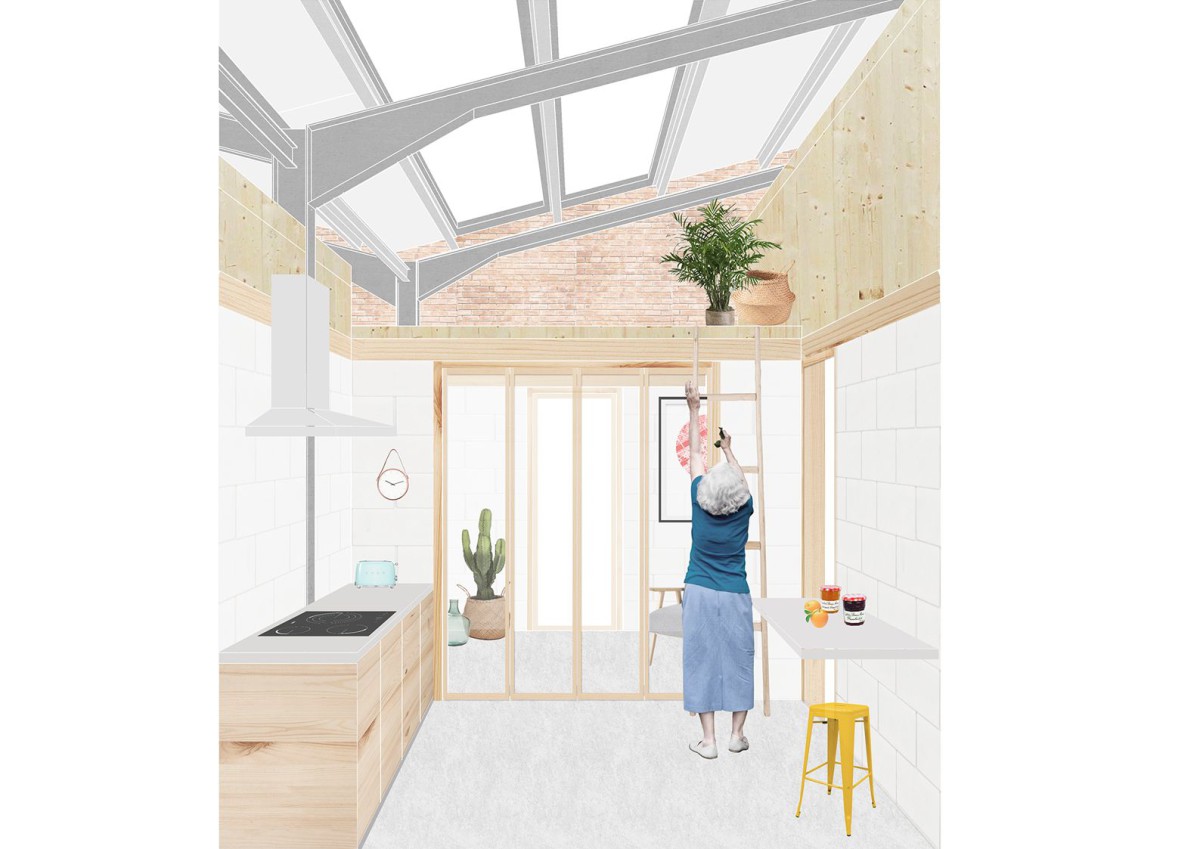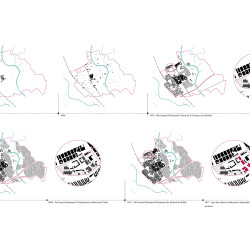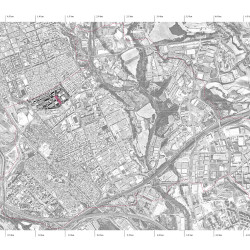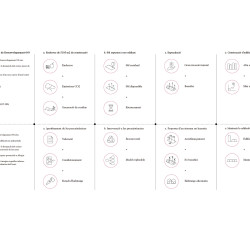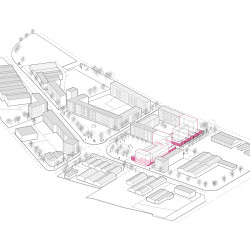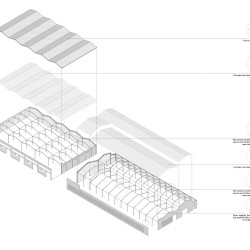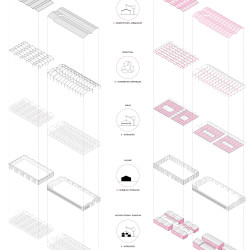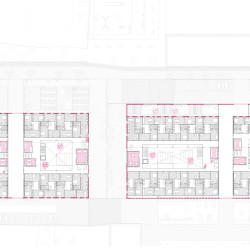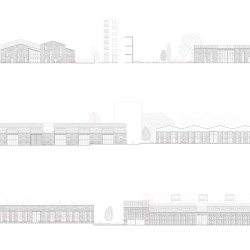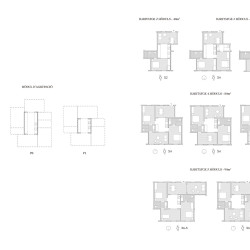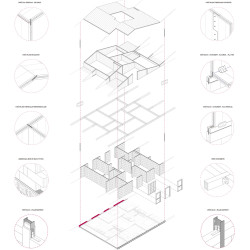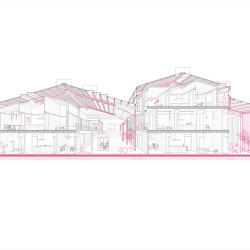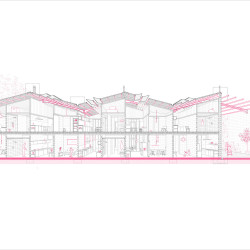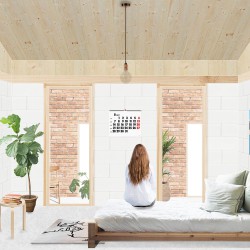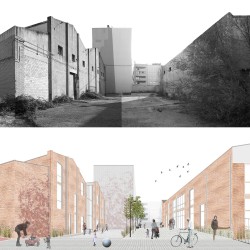Mercè Celma Hernandez . Alejandra de Pouplana Queralt
We decided to focus on an industrial area of Barberà del Vallès, where most of the industrial buildings have fallen into disuse. Subsequent growth of the surrounding city caused this industrial area to become surrounded by residential buildings.
Therefore, our objective was to respond to these obsolete buildings in the contemporary city that, due to their position within the city, can change their use to housing and integrate well into the existing neighbouring community.
_
STARTING POINTS
After a study of population growth and of the supply and demand for housing in the city, we came to the conclusion that the demand for affordable housing is a reality, and a solution could be found to meet this.
We focused on an area of 10,000m2, with two industrial existing buildings. Consultation with the local council revealed that their preference was for the buildings to be demolished and new residential buildings erected. Our proposal argued that it was more economical to reuse some of their elements and provide a new residential use to the existing constructions.
To make our proposal economically viable, we decided to develop a collective housing project, where the people that will live in the development will fund it and thereafter have their own property. To make best use of space and give cost efficiency, we proposed sharing some communal spaces, like common kitchens, multipurpose rooms and laundry rooms.
THE INTERVENTION STRATEGIES
Once we knew our first intentions, we produced a study of the existing buildings. Both constructions have a metal portal structure with pillars of IPE 240 and irregular section beams, brick walls and simple metal roof.
The construction focuses on making the most of the existing elements, to generate less waste and at the same time less economic costs. We summarized our intervention strategies in different stages: TO REPLACE and TO ADAPT the ROOF with a light and dry system; TO CONSERVE AND REINFORCE the STRUCTURE to keep the same structural language; TO INTRODUCE a new floor with precast elements so we can take profit of the height of the existing buildings; TO ADAPT AND PERFORATE the existing FACADES and finally to INTRODUCE the INTERNAL WALLS using a light, modular and single layer system.
THE PROGRAM STRATEGY
The program firstly seeks to divide the floor plan into 4 housing areas with a central courtyard that allows natural light to penetrate inside the building. The existing external walls act as a first skin which allow us to reduce the thermal requirements of the new materials introduced to the building. Finally, looking to the general floor plan arrangements, the houses will be located longitudinally to guarantee that they always have a facade in contact with the outside and another one in contact with the internal courtyard. We decided to concentrate all the communal spaces (stairs, installation kits, kitchens, multipurpose rooms, laundry room, …) in a central strip that will be continuous in the two buildings, coinciding with the central courtyard of each nucleus.
SUSTAINABILITY STRATEGY
Light: the central atrium provides natural light to the interior during the whole year due to the cellular polycarbonate panels that cover it.
Temperature: The community spaces have a temperate climate, suitable for temporary activities. The polycarbonate panels have a solar caption function for the internal spaces, shading meshes and reclining elements allowing them to adapt constantly to the climatic conditions of the environment. At the same time, they also create a thermal cushion of air-conditioned spaces (with active systems).
Air: the quality of the air is guaranteed through natural ventilation, thanks to strategically designed openings that make it possible. Various points of permanent ventilation are proposed at the top of the roof. Air quality is controlled by a temperature and CO2 sounding line.
To sum, with our intervention we proved that it is possible to give a second life to obsolete buildings in the city and we now propose a replicable housing system that could be used on other existing industrial buildings.
_
Architects: Mercè Celma Hernandez + Alejandra de Pouplana Queralt
Type: Academic project / Master thesis. ETSAVallès
Tutor: Roger Sauquet
Location: Barberà del Vallès. Spain
Project year: 2018

